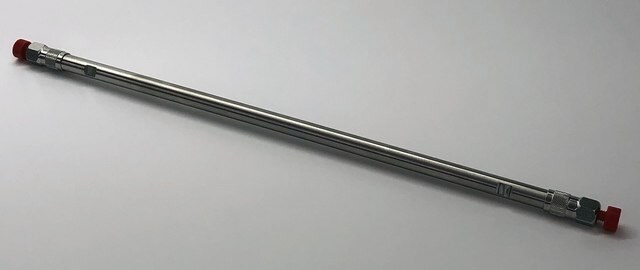59354-U30
Discovery® C8 (5 µm) HPLC Columns
L × I.D. 25 cm × 3 mm, HPLC Column
About This Item
Prodotti consigliati
product name
Discovery® C8 HPLC Column, 5 μm particle size, L × I.D. 25 cm × 3 mm
Materiali
stainless steel column
agenzia
suitable for USP L7
Nome Commerciale
Discovery®
Caratteristiche
endcapped
Produttore/marchio commerciale
Discovery®
Confezionamento
1 ea of
Grado di funzionalizzazione
7.5% Carbon loading
Parametri
≤70 °C temp. range
400 bar pressure (5801 psi)
tecniche
HPLC: suitable
LC/MS: suitable
Lungh. × D.I.
25 cm × 3 mm
Area superficiale
200 m2/g
Copertura della superficie
3.4 μmol/m2
Impurezze
<10 ppm metals
Matrice
silica gel, high purity, spherical base material
fully porous particle
Gruppo funzionale matrice
C8 (octyl) phase
Dimensione particelle
5 μm
Dimensione pori
180 Å
operating pH range
2-8
applicazioni
food and beverages
Tecnica di separazione
reversed phase
Cerchi prodotti simili? Visita Guida al confronto tra prodotti
Caratteristiche e vantaggi
- Excellent reproducibility
- Faster separation of strongly hydrophobic analytes than C18 columns
- Stable, low-bleed LC-MS separations
- Exceptional peak shapes for basic and acidic compounds
- Compatible with low organic/highly aqueous mobile phases
Note legali
Prodotti correlati
Scegli una delle versioni più recenti:
Possiedi già questo prodotto?
I documenti relativi ai prodotti acquistati recentemente sono disponibili nell’Archivio dei documenti.
Contenuto correlato
Discovery C18 and C8 HPLC Columns products offered
Il team dei nostri ricercatori vanta grande esperienza in tutte le aree della ricerca quali Life Science, scienza dei materiali, sintesi chimica, cromatografia, discipline analitiche, ecc..
Contatta l'Assistenza Tecnica.






